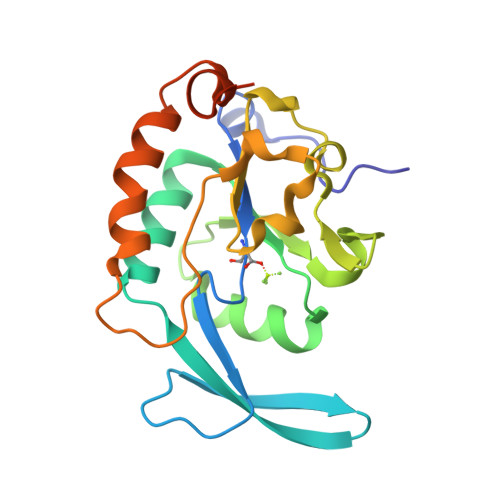Structure and Mechanism of RNA Polymerase II CTD Phosphatases.
Kamenski, T., Heilmeier, S., Meinhart, T., Cramer, P.(2004) Mol Cell 15: 399-407
- PubMed: 15304220
- DOI: https://doi.org/10.1016/j.molcel.2004.06.035
- Primary Citation of Related Structures:
1T9Z, 1TA0 - PubMed Abstract:
Recycling of RNA polymerase II (Pol II) after transcription requires dephosphorylation of the polymerase C-terminal domain (CTD) by the phosphatase Fcp1. We report the X-ray structure of the small CTD phosphatase Scp1, which is homologous to the Fcp1 catalytic domain. The structure shows a core fold and an active center similar to those of phosphotransferases and phosphohydrolases that solely share a DXDX(V/T) signature motif with Fcp1/Scp1. We demonstrate that the first aspartate in the signature motif undergoes metal-assisted phosphorylation during catalysis, resulting in a phosphoaspartate intermediate that was structurally mimicked with the inhibitor beryllofluoride. Specificity may result from CTD binding to a conserved hydrophobic pocket between the active site and an insertion domain that is unique to Fcp1/Scp1. Fcp1 specificity may additionally arise from phosphatase recruitment near the CTD via the Pol II subcomplex Rpb4/7, which is shown to be required for binding of Fcp1 to the polymerase in vitro.
Organizational Affiliation:
Department of Chemistry and Biochemistry, Gene Center, University of Munich, Feodor-Lynen-Str. 25, 81377 Munich, Germany.

















